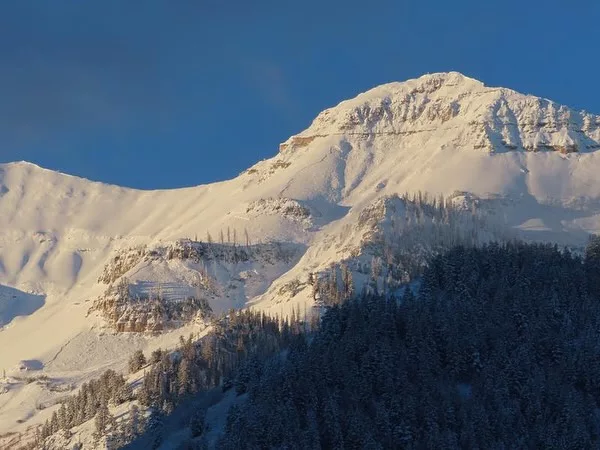
The first major downpour of snow has started falling across the state of Utah, leading many recreationists and outdoor enthusiasts to want to explore the mountains over the winter break. But with current conditions, the Utah Avalanche Center warned in a release to expect,” very dangerous” avalanche conditions through the weekend. Castle Country Radio sat down with UAC Forecaster Brett Kobernik to review these conditions and talk about avalanche safety.
“We are anticipating some dangerous avalanche conditions to materialize this weekend,” explained Kobernik, opening our conversation. “This stems from the fact that we’ve had some snow on the ground for quite a while, and when snow sits around for long periods and it’s shallow, it turns into a very sugary, cohesionless, faceted grains of snow, and these can form a very weak layer of snow once we start stacking more snow on top of them, and that’s what we’re kind of looking at this weekend … Along with just the snowfall, we are going to be seeing quite strong winds, and that is also a very big factor in making these conditions unstable.”
Moving from the conditions, Kobernik explained what those going out to brave the conditions should be on the lookout for to stay safe,” We call this old, weak layer a persistent weak layer, and the reason is that it can persist for a long time. When we have these persistent weak layers, probably the most important thing to do for folks going into high country is to stay off steep slopes. So, that means slopes steeper than about 30 degrees.”
For those still looking to brave these conditions, Kobernik provided some safety tips if you’re planning on going out and exploring the mountainside. “Folks go up and recreate quite a bit in the backcountry, skiing, snowboarding, snowmobiling, should all be carrying avalanche rescue equipment, and that includes an avalanche transceiver or an avalanche beacon and a collapsible shovel and a collapsible avalanche probe,” he added,” Now, probably the most important thing is to be aware of when conditions are ripe for avalanches, and that way you avoid being caught in them and having to take that chance that you are going to find your partner with that avalanche gear that I recommended.”
In a release, the UAC provided some other tips for staying safe in the backcountry which include:
- As avalanche danger increases, staying out of backcountry avalanche terrain is the safest option. Avoid being on, under, or near slopes steeper than about 30 degrees.
- Check everyone in your group for operational avalanche rescue gear, and be sure everyone knows how to use it.
- Skiers and riders leaving resort boundaries should know they may enter avalanche-prone terrain.
- If you go into the backcountry, don’t go alone. If you must go into avalanche terrain, cross steep slopes one person at a time while your companions watch from a safer location.
In closing, Kobernik stated,” Being armed with some information is probably the best thing. So, we put out a daily avalanche forecast for the Manti skyline, and it describes what kind of avalanche conditions are going to be going on up there, and it’s updated by about 7 a.m. each morning.”
To view this daily avalanche forecast, you can visit UtahAvalancheCenter.org.
